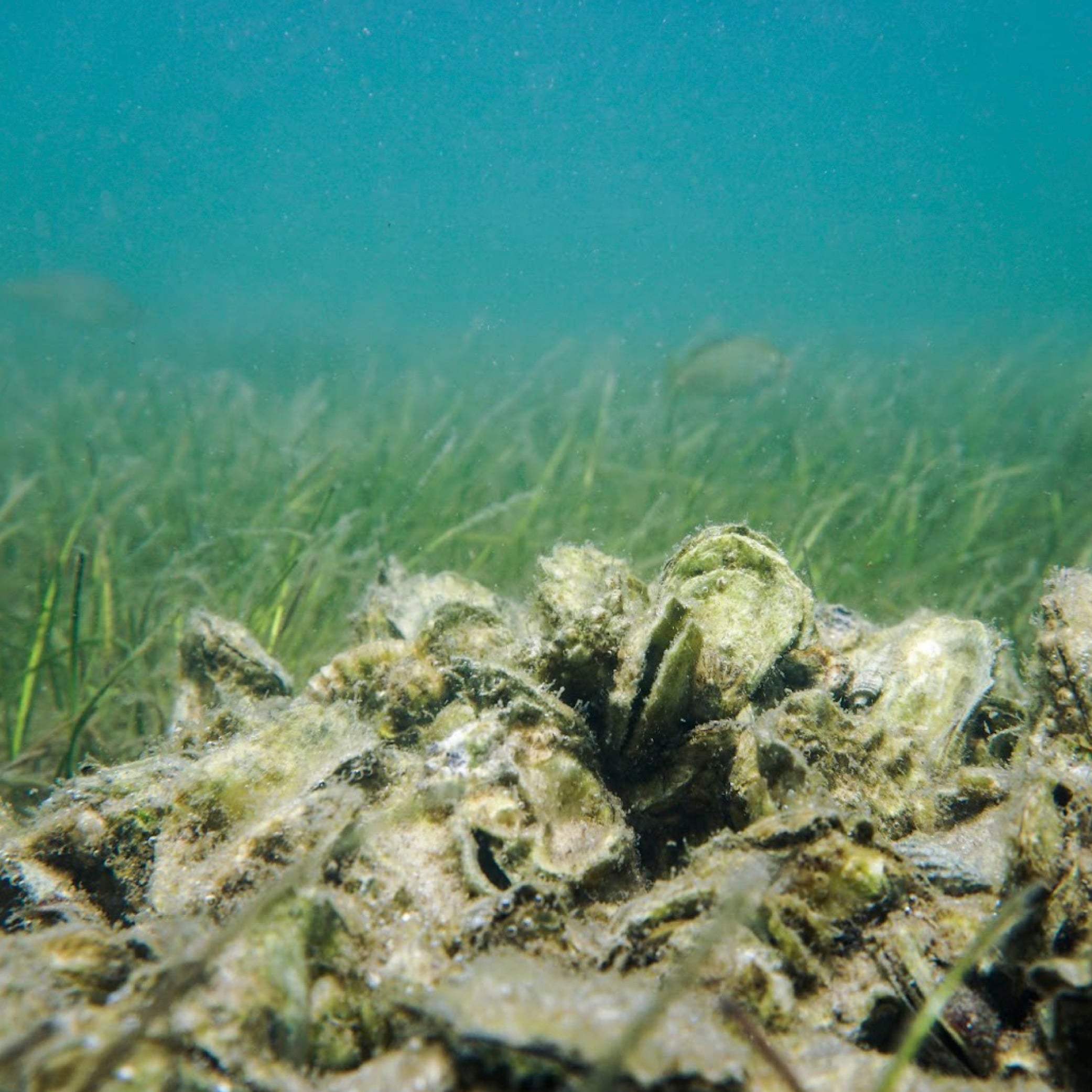Oysters: A Coastal Superhero

Oysters are filter feeding organisms that act as natural filters in aquatic ecosystems. Oysters are found in brackish water of coastal estuaries where freshwater and seawater mix. Estuaries are highly productive ecosystems, which provide a diverse range of habitats that support a rich biodiversity. Being somewhat protected from wave action, they also serve as important breeding grounds for fish and shellfish such as oysters [1].
Environmental Requirements for Oysters to Thrive
Adult oysters are sessile, attaching themselves to a substrate where they remain anchored rather than moving about in search of food. While sheltered estuaries provide the perfect habitat for oysters, they also have another requirement. As they can easily become smothered if they settle on a sandy seabed, they require a hard benthic substrate on which to attach themselves. They also thrive on the edge of a channel that provides a good flow of water, providing a steady supply of food to sustain their growth. Oysters do best in productive brackish water bodies at a depth of between eight to thirty-five feet [2].
Because estuaries serve as the interface between rivers and the ocean, they consist of freshwater mixed with salt water. Consequently, salinity levels — measured in parts per thousand (ppt) — will vary depending on the ratio of freshwater to seawater. Water closer to the ocean will have a higher salinity compared to water located nearer the mouth of the river that discharges into the estuary. While oysters can survive in water with salinity levels ranging from 5-35 ppt, they do best in water with salinity levels between 14-28 ppt. Similarly, while oysters can tolerate extreme temperatures as low as 38°F and as high as 120°F for short intervals, they do best at water temperatures of between 68-90°F [3].
Like terrestrial organisms, aquatic organisms need oxygen to survive. On land, animals get oxygen from the surrounding air; in aquatic habitats, this oxygen supply is derived from the oxygen dissolved in water. While most marine organisms require dissolved oxygen levels of at 30% saturation to survive, oysters can survive at levels as low as 20% saturation [4].
Oysters are intertidal and subtidal, meaning they can be found submerged beneath the water, and in some warmer areas may also be found on rocks alongside water in the intertidal zone. Oysters living in the intertidal zone will experience tidal fluctuations in water levels, and may be exposed for short intervals at low tide [2].
What Function Do Oysters Serve in the Ecosystem?
Oysters play an important role in the ecosystem. They provide a source of food for aquatic organisms such as filter-feeding comb jellies that feed on oyster larvae, and crabs, oyster drills, and boring sponges, which all feed on adult oysters [4].
As oysters are filter feeds, they derive their food from the water column by pumping water through their gills. Phytoplankton, algae and other food particles are trapped in the gills, then moved to the mouth and on to the stomach [5]. One oyster can filter up to fifty gallons of water each and every day [4]. Besides filtering out algae cells, oysters also remove nitrogen from water. Some of the nitrogen they absorb is incorporated into the cells in their body, while the surplus is excreted in pseudofaeces that falls to the bottom of the estuary and eventually gets buried by sand and silt. Scientists believe that oysters could potentially play a key role in removing surplus nitrogen from water bodies. If so, they could provide a sustainable solution to the nutrient-loading problem [4,6]. Nutrient-rich waters fuel harmful algal blooms that can strip oxygen from the water column as they die off, resulting in hypoxic dead zones that are unable to support life.
Oyster reefs also serve as natural breakwaters that provide coastal areas with protection from waves and tidal surges during storms. By absorbing and dissipating wave energy, oyster reefs can prevent coastal erosion and the degradation of threatened coastal habitats [7].
Oysters not only provide us with an important source of seafood, they also provide important ecosystem services that ensure the health of coastal ecosystems and the communities who depend on them for their survival.
Sources:
- https://www.epa.gov/nep/basic-information-about-estuaries
- https://www.fisheries.noaa.gov/species/eastern-oyster
- https://irlspecies.org/taxa/index.php?quicksearchtaxon=Crassostrea+virginica&taxon=&formsubmit=Search+Terms
- The Museum City of New York. Future City Lab: Oysters and their Habitat — Handout.
- https://www.vims.edu/public/msd/news/oysters-how-much-do-we-know.php#:~:text=Like%20fish%2C%20oysters%20have%204,then%20stick%20to%20the%20gills.
- https://chesapeakebay.noaa.gov/oysters/oyster-reefs
- https://stormrecovery.ny.gov/learn-more-about-living-breakwaters-project
- Most Viewed Blog Articles (5)
- Company News (285)
- Emerging Technologies (64)
- Microbiology and Life Science News (93)
- Water and Fluid Separation News (97)
- Filtration Resources (93)
- Product News (19)


![Join Sterlitech at BIO 2024 [Booth #5558]: Exploring the Future of Biotechnology](https://www.sterlitech.com/media/blog/cache/300x200/magefan_blog/b4.jpeg)



